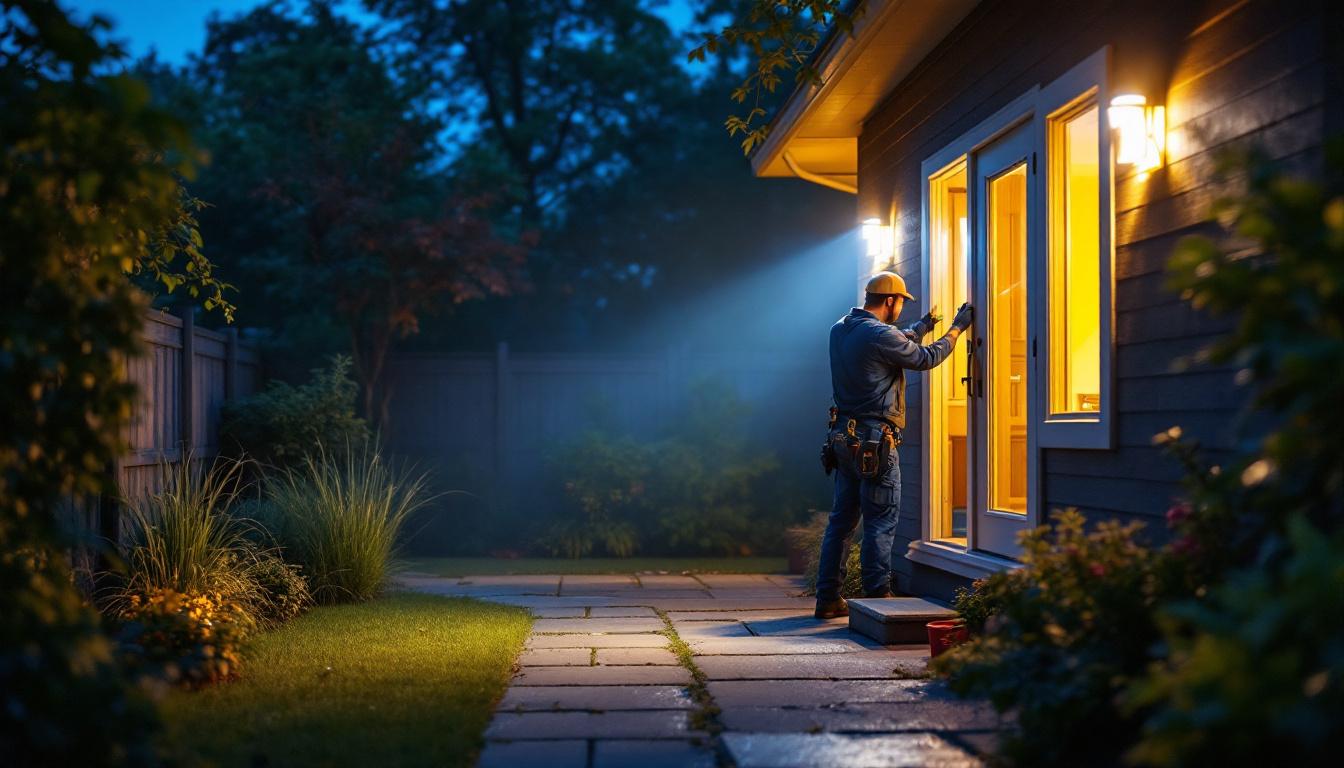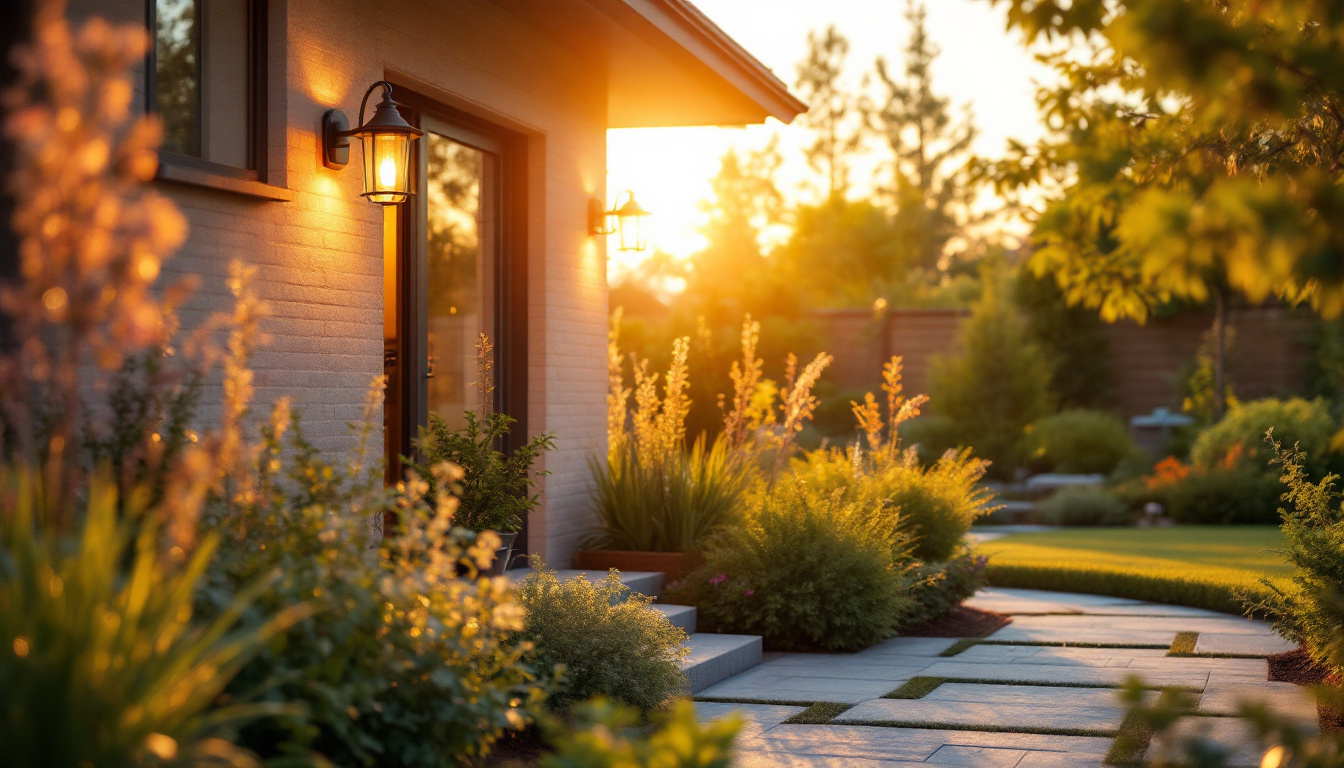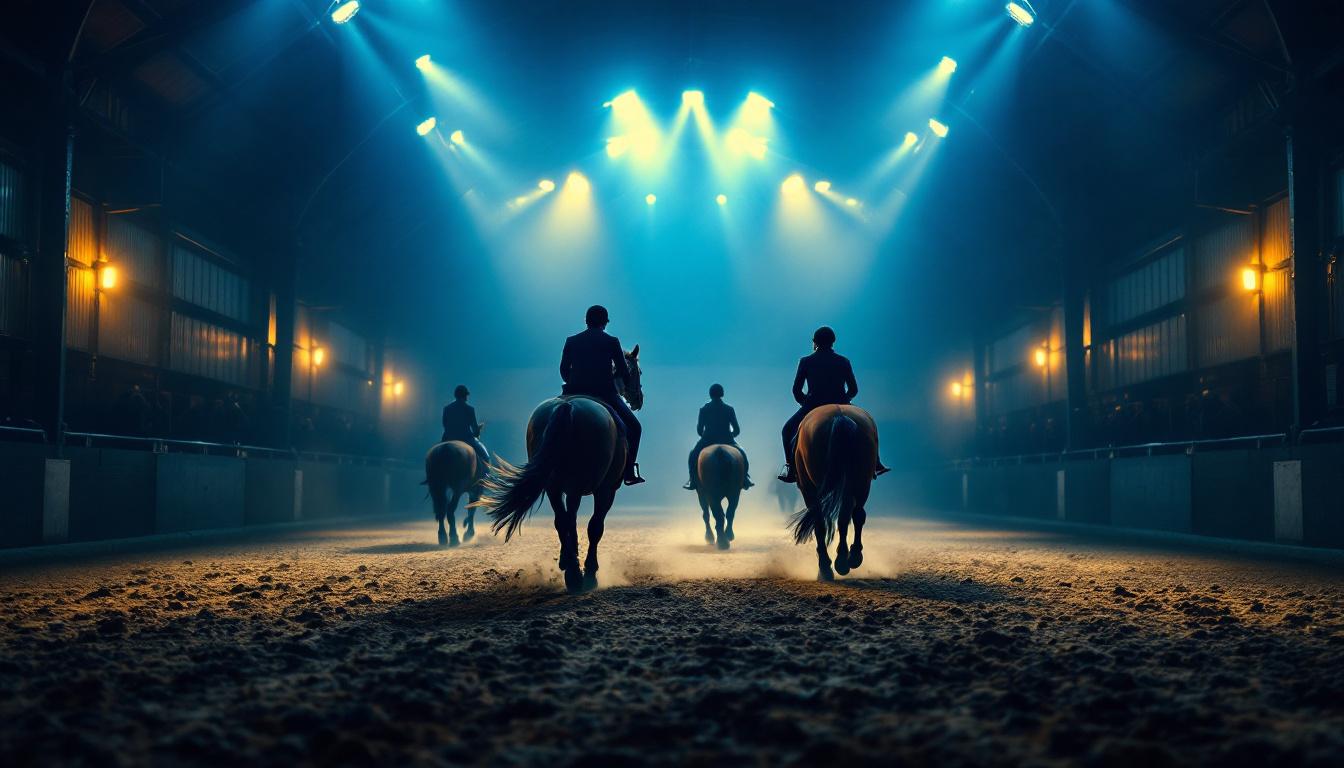
When selecting LED floodlights for outdoor projects, lighting contractors face a myriad of options. The specifications can vary widely—from wattage and lumen output to beam angle and color temperature. Understanding these variables is crucial to delivering a solution that meets client expectations and complies with safety standards.
Start by assessing the purpose of the lighting. Is it for security, landscape accentuation, or large-area illumination? Security lighting demands high lumen output and often a cooler color temperature to enhance visibility, while landscape lighting benefits from warmer hues that create inviting atmospheres. For example, a floodlight with 4,000 lumens and a 5000K color temperature works well for parking lots or building perimeters. In contrast, 2,000 lumens at 3000K can highlight garden features without harshness.
Beam angle also plays a pivotal role. Narrow beams (15° to 30°) concentrate light on specific areas, ideal for highlighting architectural details or statues. Wider beams (60° to 120°) cover broad spaces like sports fields or large yards. Contractors should match beam angles to the client’s needs to avoid over-illumination or dark spots.
One of the primary benefits of LED floodlights is their energy efficiency. A 50-watt LED floodlight can often replace a 250-watt halogen equivalent, drastically reducing power consumption. For contractors, this means advising clients on long-term savings and environmental impact, which can be a strong selling point.
However, wattage alone doesn’t tell the full story. Pay attention to lumens per watt (lm/W) ratings to gauge efficiency. A floodlight with 100 lm/W is more efficient than one with 80 lm/W, even if their wattages are similar. This metric helps contractors recommend products that balance brightness with energy use.
Additionally, consider the durability and construction of the floodlights. Many LED floodlights are designed to withstand harsh weather conditions, featuring robust housings that resist corrosion and impact. This is particularly important for outdoor installations where exposure to rain, snow, and extreme temperatures can affect performance. Look for products with high ingress protection (IP) ratings, which indicate their resistance to dust and moisture. A floodlight with an IP65 rating, for instance, is suitable for outdoor use, ensuring longevity and reliability in various environments.
Moreover, the installation process should not be overlooked. Some floodlights come with adjustable mounting options, allowing for flexibility in positioning and angling the light to achieve the desired effect. This adaptability can be especially beneficial in complex projects where specific lighting angles are crucial for achieving optimal visibility or aesthetic appeal. Contractors should also consider the ease of maintenance, as some models allow for quick bulb replacements or have integrated features that extend their lifespan, reducing the need for frequent servicing.
Proper installation ensures optimal performance and longevity of LED floodlights. Lighting contractors must consider mounting height, angle, and environmental factors to prevent issues such as glare, uneven lighting, or premature wear. A well-planned installation not only enhances the aesthetic appeal of a property but also significantly improves safety and security in outdoor spaces. By taking the time to evaluate the specific needs of the area being illuminated, contractors can tailor their approach to maximize both functionality and energy efficiency.
Mount floodlights at a height that maximizes coverage while minimizing light pollution. For security purposes, mounting between 10 and 20 feet is common, but this can vary based on the floodlight’s beam angle and lumen output. Angling the fixture downward reduces glare and directs light where it’s needed most. Additionally, considering the surrounding landscape is crucial; trees, buildings, and other structures can obstruct light and create shadows, so positioning the lights strategically can help achieve an even distribution of illumination across the desired area.
Outdoor fixtures must withstand rain, wind, dust, and temperature fluctuations. Look for floodlights with an IP65 rating or higher, indicating protection against dust ingress and water jets. Materials like die-cast aluminum housings provide durability and heat dissipation, extending LED lifespan. Furthermore, choosing floodlights with tempered glass lenses can enhance resistance to impacts and scratches, ensuring that the lights maintain clarity and brightness over time, even in challenging weather conditions.
Sealing connections and using weatherproof junction boxes prevents moisture intrusion, a common cause of electrical failure. Additionally, contractors should advise clients on routine maintenance checks, especially in harsh climates, to ensure continued reliability. This includes cleaning the fixtures to remove dirt and debris that can accumulate and diminish light output, as well as inspecting wiring and connections for signs of wear or corrosion. Implementing a seasonal maintenance schedule can help identify potential issues before they escalate, ensuring that outdoor LED floodlights remain effective and efficient throughout their operational life.
Modern LED floodlights increasingly come with smart features, such as motion sensors, dimming capabilities, and wireless control. These options offer enhanced functionality and energy savings but require careful integration.
Motion sensors can reduce energy use by activating lights only when movement is detected. For security lighting, this also adds an element of deterrence. However, sensor placement is critical; false triggers from animals or passing cars can frustrate users. Contractors should test sensor zones during installation and adjust sensitivity accordingly. Additionally, some advanced motion sensors can differentiate between types of movement, allowing for tailored responses—such as keeping lights off during the day when natural light is sufficient or only activating when a person approaches a certain distance.
Dimming options allow clients to adjust brightness based on time of day or specific needs. This flexibility is valuable in commercial settings where lighting requirements change throughout operating hours. Scheduling features can automate on/off cycles, reducing manual intervention and improving energy efficiency. For instance, a business could program floodlights to dim during off-peak hours, saving energy while still providing necessary illumination for safety and security.
When integrating smart controls, ensure compatibility with existing electrical systems and consider the client’s comfort with technology. Providing clear instructions or offering ongoing support can enhance satisfaction and reduce service calls. Furthermore, the integration of smart lighting systems with home automation platforms can lead to even more sophisticated control options. For example, users can set their floodlights to synchronize with other smart devices, such as security cameras or alarms, creating a comprehensive security network that responds dynamically to potential threats. This interconnectedness not only boosts safety but also elevates the overall user experience, making smart lighting a desirable feature for both residential and commercial properties.
Lighting contractors often encounter challenges such as glare complaints, uneven coverage, and electrical issues. Anticipating and addressing these problems upfront saves time and enhances project success.
Glare can cause discomfort and reduce visibility, defeating the purpose of floodlighting. Using fixtures with built-in shields or adjustable louvers helps control light direction. Selecting appropriate beam angles and mounting heights also minimizes spill light into neighbors’ properties or the night sky.
Complying with local lighting ordinances is essential. Many municipalities regulate outdoor lighting to prevent excessive brightness and light trespass. Contractors should familiarize themselves with these rules to avoid costly rework or fines. Additionally, utilizing adaptive lighting technology can further mitigate glare. This technology adjusts the intensity of the lights based on ambient light levels, ensuring that illumination is both effective and unobtrusive. By incorporating smart controls, contractors can create a more sustainable lighting solution that not only meets regulations but also enhances the overall aesthetic of the area.
Outdoor lighting installations must meet electrical codes and standards to protect users and property. Proper grounding, circuit protection, and wiring methods are non-negotiable. Using weather-resistant connectors and conduit protects wiring from damage and corrosion.
Contractors should always verify that the electrical load does not exceed the circuit capacity and that all components are rated for outdoor use. Documentation and permits may be required, so maintaining thorough records and working with local authorities streamlines the process. Furthermore, regular maintenance checks are vital to ensure ongoing compliance and safety. Implementing a routine inspection schedule can help identify potential issues before they escalate, ensuring that the lighting system remains functional and safe over time. This proactive approach not only protects the investment but also fosters trust and satisfaction among clients, reinforcing the contractor’s reputation in the industry.
Beyond technical expertise, lighting contractors build trust through clear communication and tailored solutions. Understanding client goals and site-specific conditions leads to better outcomes. Each project presents its unique challenges, whether it’s a residential space requiring a cozy ambiance or a commercial venue needing bright, functional lighting. By actively engaging with clients to grasp their vision, contractors can propose innovative lighting designs that not only meet but exceed expectations.
Offer clients demonstrations or mock-ups when possible. Visualizing the lighting effect helps set realistic expectations and fosters collaborative decision-making. This hands-on approach allows clients to see how different fixtures and placements can transform their space, making them feel more invested in the process. Discuss maintenance requirements and warranty terms upfront to avoid surprises. Providing a clear outline of ongoing care and support can enhance client trust and satisfaction, ensuring they feel secure in their investment.
The lighting industry evolves rapidly, with new technologies and standards emerging regularly. Contractors who stay informed through trade publications, manufacturer training, and industry events maintain a competitive edge. Engaging in continuous education not only sharpens technical skills but also opens doors to networking opportunities with other professionals, allowing for the exchange of ideas and best practices. Attending workshops and seminars can also inspire creative solutions that can be applied to future projects.
Building relationships with reliable suppliers ensures access to quality products and technical support. This network can be invaluable when troubleshooting or specifying cutting-edge solutions. Furthermore, staying connected with suppliers can lead to early access to new products and technologies, allowing contractors to offer clients the latest innovations in energy efficiency and design. Regular communication with these partners fosters a collaborative spirit that can enhance project outcomes and client satisfaction, as contractors can confidently recommend products that align with their clients’ needs and preferences.
Ready to elevate your lighting projects with premium LED floodlights that combine quality and affordability? Look no further than LumenWholesale, where we specialize in providing contractors with spec-grade lighting solutions at unbeatable wholesale prices. Say goodbye to local distributor markups and hello to a vast selection of industry-standard, high-performance lighting options. Plus, with the convenience of free shipping on bulk orders, you can rest assured that you’re getting the best value without any hidden fees. Don’t compromise on quality or cost—choose LumenWholesale for a seamless blend of excellence and efficiency. Wholesale Lighting at the Best Value is just a click away.

Discover the latest trends in under cabinet LED light strips that every lighting contractor should know.

Discover the best deals on outdoor lighting while steering clear of common pitfalls with our comprehensive guide tailored for lighting contractors.

Discover effective strategies for lighting contractors to tackle common challenges in the industry.

Discover why lighting contractors should prioritize indoor riding arenas in their projects.